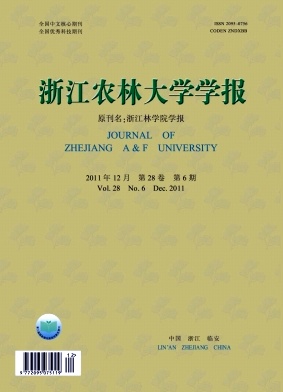Thermal performance of several wood-plastic composite (WPC) walls
doi: 10.11833/j.issn.2095-0756.2011.06.016
- Publish Date: 2011-12-20
-
Key words:
- wood-plastic composites /
- heat transmission coefficient /
- heat flow meter method /
- composite wall /
- single-material wall
Abstract: Wood-plastic composites (WPCs),in regards to ornamentation,processing,installation,and physical and mechanical performance,have favorable energy efficiency qualities for residential buildings. To analyze newly developed residential building materials,a heat flow meter method was used to measure the heat transmission coefficient of five walls:[W1. common brick wall (CBW)(10 mm cement mortar+240 mm common brick + 10 mm cement mortar);W2.(CBW+40 mm WPC keel+20 mm WPC board);W3.(CBW+40 mm WPC keel+25 mm polyurethane foam sprayed on the WPC board+20 mm WPC board);W4.(CBW+40 mm WPC keel+30 mm WPC board filled with polyurethane foam);and W5.(CBW+20 mm WPC keel+60 mm WPC board filled with polyurethane foam)] and two kinds of single-material walls:[60 and 120 mm single-material boards (SMBs)]. These walls were compared with reference to design standard (JGJ 134-2010) for energy efficiency of residential buildings in hot summer and cold winter zones. Results showed that:(1)W1 did not meet the new thermal specification requirements. (2)When the building shape coefficient was0.4,all four composite walls (W2-W5) met requirements. However,when the building shape coefficient was>0.4,W2 did not meet requirements,whereas W3-W5 did. (3)W3 had the minimum heat transmission coefficient and best thermal performance with the most inexpensive and most rational structure. (4)Compared with composite walls,single-material walls were thin and light weight with high thermal insulation performance. The 60 mm SMBs met the lowest thermal technology requirement for the inner partition wall, and the 120 mm SMBs met the thermal technology requirement for the outer wall. Thus,single-material walls were more suitable for use as partition walls. [Ch, 3 fig. 3 tab. 10 ref.]
| Citation: | DONG Sheng-zhong, WANG Mei-yan, SUN Gang-qiang, YANG Fei, ZHANG Yi-liang, XU Shao-chun, WU Hang-dong, ZHOU Qu-long. Thermal performance of several wood-plastic composite (WPC) walls[J]. Journal of Zhejiang A&F University, 2011, 28(6): 931-936. doi: 10.11833/j.issn.2095-0756.2011.06.016 |






 DownLoad:
DownLoad: